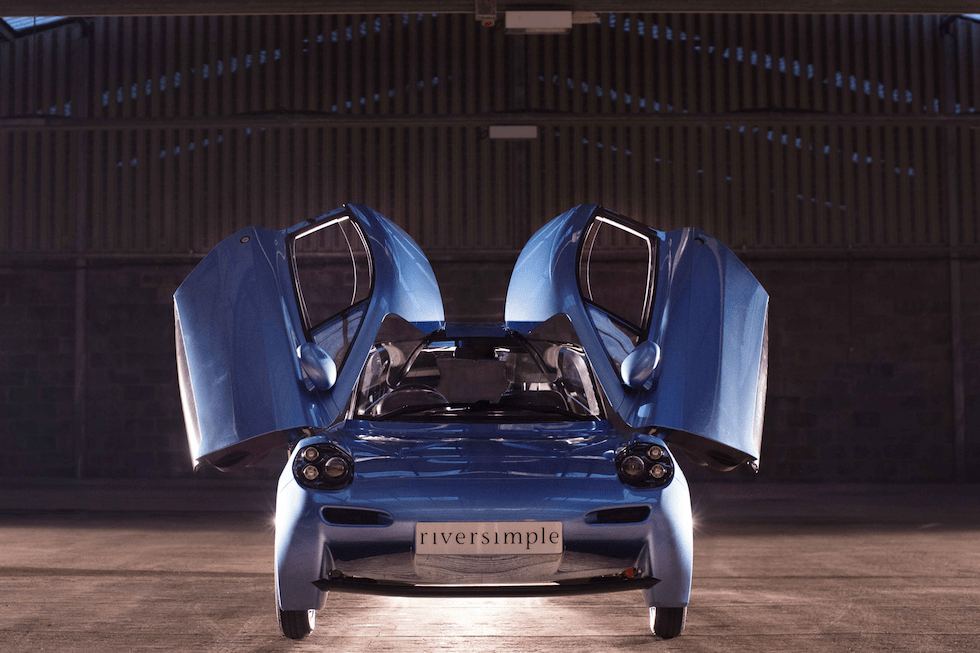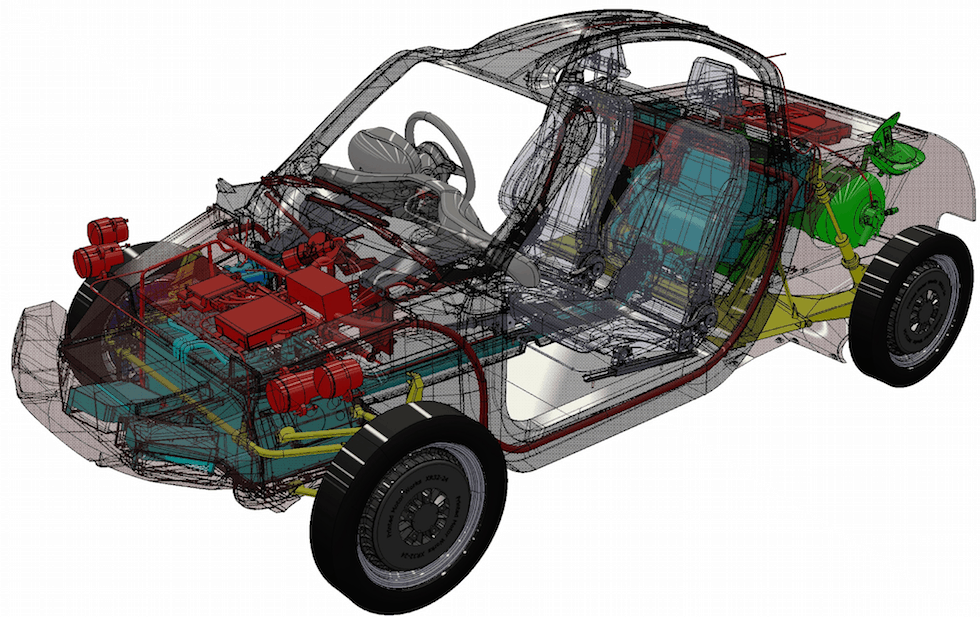
Riversimple Movement’s two-seat hydrogen fuel cell powered road car is set for trials later this year with production scheduled from 2018. Once on the market, Rasa will be offered to consumers through a sale of service model that involves the payment of a fixed monthly fee and mileage allowance in return for repairs, maintenance, insurance and fuel expenses.
Company founder Hugo Spowers told The Engineer that Rasa - developed with the help of a £2m grant from the Welsh government - is designed to maximise efficiency through a combination of lightweight materials and a simplified powertrain that contains 18 moving parts.
The four-wheel drive vehicle’s sub-40kg carbon composite chassis is said to absorb more energy per unit weight than steel in impact and its low profile has helped the prototype achieve 0.224cd in wind tunnel tests.
“It's unavoidable making it a bit sporty if you’re trying to make it efficient,” said Spowers.
When the car is moving, hydrogen passes through a Proton Exchange Membrane (PEM) inside the 11hp, 8.5kW fuel cell where it combines with oxygen to form water and electricity to drive electric motors mounted in each wheel, which each produce 170Nm of torque at 840rpm.
When braking, the motors act as a kinetic energy recovery system (KERS) that generates electricity and replenishes Rasa’s 120 lithium hybrid super-capacitors.

According to Spowers, the capacitors deliver over 80% of the power needed during acceleration, thereby relying on the fuel cell for 20% of the power and allowing it to be sized for constant cruise, which in the case of Rasa is 60mph.
Spowers said: “If you do a map of your constants and your acceleration and your hill climbing – for instance – our capability fits like a glove around that profile, but it won’t do anything else.
“The only way you can really rely on that is if you can rely on the capacitors for 80% power and the only way you can rely on the capacitors … is if you have really efficient regeneration.
“In a typical braking event we will recover over 50% of the kinetic energy of the car. The Prius talks about regen’ but it’s only about 10% because when you press the brake pedal in a Prius all your four friction brakes come on.
“Braking heavily, we can get to about 70%. Now that’s not 100%. It’s not the 80% we need for acceleration, so there is some top up from the stack. This is why we’ve got four wheel brakes…if you only had front motors where you do most braking - say 60% - you’d have to have friction for 40%, so by definition you would only be able to rely on capacitors for 50% of the power rather than 80%.
“If you only rely on the caps for 50% you’ve got to rely on the fuel cell for the other 50%, so you’d have a fuel cell 2.5 times as big, so the benefit of regen’ to us is not the bit of energy you save and use again but the knock on effect it has on the sizing on the rest of the powertrain.”
Starting later this year, following funding to match a €2m EU grant, Riversimple will conduct a public 12-month trial of 20 Rasa prototype cars as part of the continued development of the first full production model, which comes to market in 2018. It will be offered to individuals in what the company describes as a strategically planned phased roll-out by region in order to support a low risk, commercially practical introduction of hydrogen refuelling infrastructure.




Red Bull makes hydrogen fuel cell play with AVL
Formula 1 is an anachronistic anomaly where its only cutting edge is in engine development. The rules prohibit any real innovation and there would be...